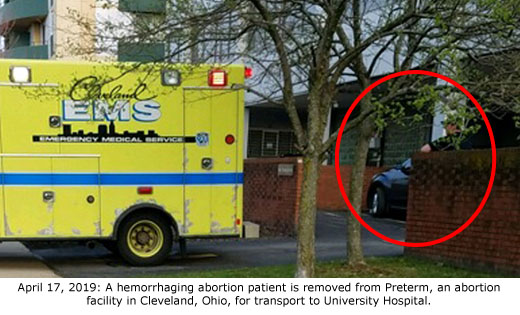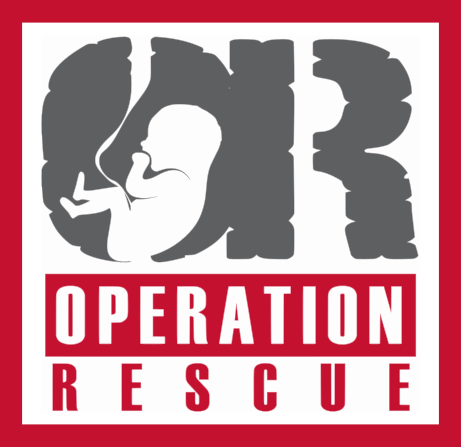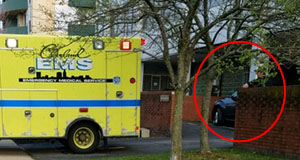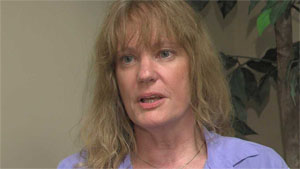By Cheryl Sullenger
Cleveland, Ohio – Fred Sokol had already stood for four hours praying and offering help to abortion-bound women with his bright yellow pro-life signs lining the street in front of Preterm, a high-volume abortion facility that also serves as a training grounds for future abortionists. It was six o’clock and time to go home.
Fred picked up his signs and took them to his car. By the time he had packed up and started the drive home it was already around 6:20 pm. His route took him past Preterm, and it’s a good thing it did.
Fred noticed the flashing lights of an ambulance and quickly parked. He saw that a fire unit and an ambulance with its back door flung open sat at the curb in front of Preterm with no one around.
Fred began to snap photos from the public sidewalk when a second ambulance approached and parked behind the first ambulance.

Public records related to this medical emergency, including a Computer Aided Dispatch printout, were obtained by Operation Rescue. They showed that a call was placed through the 911 exchange at 6:19 p.m. on Wednesday, April 17, 2019. The first unit, Med 3, arrived at 6:24 p.m.
According to Preterm’s website, abortion appointments are available throughout the day and into the evening hours on Wednesdays.
The 911 call recording revealed a slightly nervous caller from Preterm.
“I have a patient that needs medical attention,” she told the dispatcher.
That statement seemed odd since Preterm is actually considered a medical facility. Wasn’t the patient already receiving medical attention?
“She, uh, had an abortion – a second trimester abortion and she kinda bled pretty heavy,” the Preterm worker explained.
The 32-year old patient was awake, breathing and in “stable” condition, according to the recording. The “doctor” was reportedly with the patient at the time the call was made. It became obvious that he or she was unable to control the bleeding and needed emergency assistance.
Fred hadn’t been taking pictures long when several emergency workers came out of the building. One began shouting at Fred to “Get out of here.” He continued to snap photos, but stayed back a safe distance.
The ambulance identified as Med 3 backed into one of the clinic’s two driveways in order to receive the patient, who was held inside the parking structure until the ambulance could slowly get into position. Once loaded into the ambulance, she was soon rushed away.

That seemed unusual because all of the 13 medical emergencies that took place in the four years prior to the April 17 event, the ambulances had remained parked on the street.
Twenty-four minutes after the 911 call was placed, the patient arrived at the University Hospital emergency room to receive “medical attention” that the abortionist at Preterm was incapable of providing.
This incident raises several questions:
- Hemorrhage is one of the most common complications to surgical abortion. Why isn’t Preterm equipped and its personnel trained to handle this complication – one that has occurred at this facility at least a dozen times since 2014.
- The ambulance arrived very soon after Fred Sokol had vacated the sidewalk in front of the facility. Earlier that day, Operation Rescue had released 911 records related to an April 5, 2019 medical emergency at Preterm. Did Preterm wait for Sokol to leave before calling for emergency help? Did they delay calling 911 to keep Sokol from documenting this incident?
- It took longer for the ambulance to back into the driveway than it would have taken to push the gurney to the ambulance on the street. Why did this delay occur? What were they trying to hide?
- Are complications occurring because this is a training facility that is allowing trainees to make mistakes that are hurting women?
- Why, for the first time, did two ambulances respond for only one person?
“We have been informed that in some areas, when a pregnant woman is hemorrhaging, two ambulances are dispatched; one to care for the mother and the other to care for her baby,” said Troy Newman, President of Operation Rescue. “This raises the question of whether the baby survived the abortion process for a short time. Because the second ambulance did not transport a patient, it is pretty clear the baby did not make it, if he or she survived at all.”
Operation Rescue is in the process of filing a complaint with the Ohio Department of Health over this and the 13 other medical emergencies that have taken place at Preterm since March 2015.
[All photos courtesy of Fred Sokol.]





